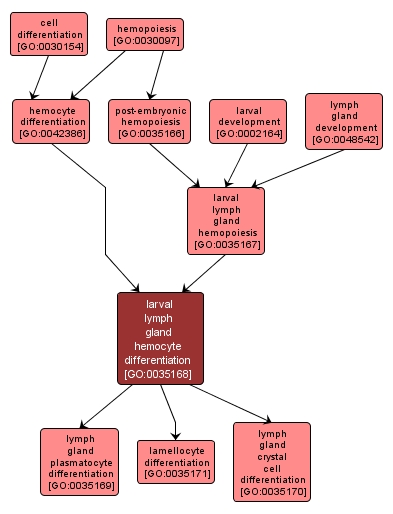| Desc: |
The process whereby a relatively unspecialized cell derived from the larval lymph gland acquires the specialized features of a mature hemocyte. The lymph gland consists of three to six bilaterally paired lobes that are attached to the cardioblasts during larval stages, and it degenerates during pupal stages. Hemocytes are blood cells associated with a hemocoel (the cavity containing most of the major organs of the arthropod body) which are involved in defense and clotting of hemolymph, but not involved in transport of oxygen. An example of this process is found in Drosophila melanogaster. |














